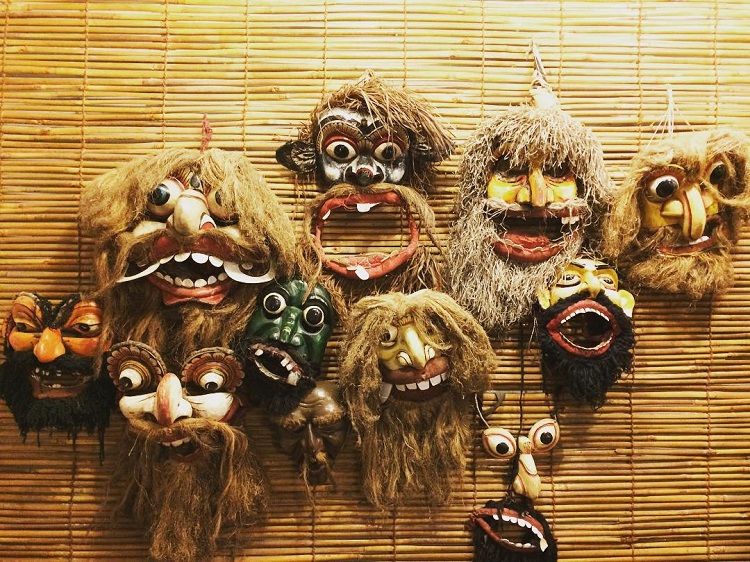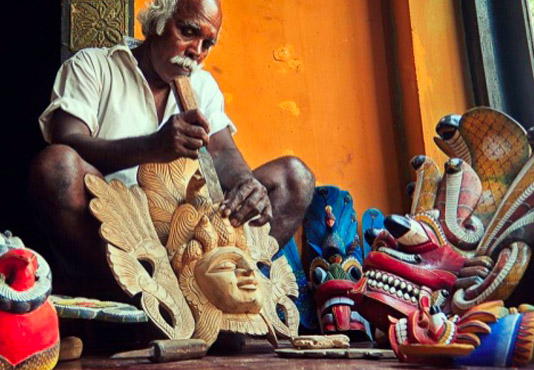The Ambalangoda Mask Museum: A Deep Dive into Sri Lanka’s Mask-Making Heritage
Nestled in the coastal town of Ambalangoda, the Ambalangoda Mask Museum stands as a premier destination for those intrigued by the rich tradition of Sri Lankan mask-making. This museum offers a fascinating and comprehensive exploration of the art and history of traditional Sri Lankan masks, which hold a significant place in the island’s cultural practices and artistic expressions. As a center dedicated to preserving and showcasing this unique craft, the museum provides visitors with a thorough understanding of the craftsmanship, symbolism, and cultural significance behind these vibrant artifacts.
The Ambalangoda Mask Museum boasts an extensive and diverse collection of masks, each intricately crafted and painted to represent a wide array of deities, demons, and mythological figures. The masks on display are notable for their elaborate designs and vibrant colors, reflecting the skill and creativity of Sri Lankan artisans.

Among the collection are masks representing various Hindu and Buddhist deities, each crafted with attention to detail and symbolic significance. These masks are used in traditional rituals and ceremonies, and their designs often incorporate elements such as divine attributes, celestial motifs, and sacred symbols. Visitors can appreciate the artistic techniques employed in creating these masks and their role in religious and cultural practices.

A significant portion of the collection includes masks representing demons and mythical creatures. These masks are characterized by their dramatic and exaggerated features, such as large fangs, bulging eyes, and vibrant colors. They are integral to traditional dance performances and rituals aimed at warding off evil spirits and ensuring spiritual protection. The museum provides insights into the mythology and folklore associated with these masks, offering a deeper understanding of their cultural context.

The museum also features masks depicting various mythological figures from Sri Lankan folklore. These masks often embody characters from epic tales and legends, and their designs reflect the stories and themes associated with these figures. The intricate details and vibrant hues of the masks bring these mythological stories to life, providing visitors with a visual representation of Sri Lanka’s rich storytelling tradition.

The Ambalangoda Mask Museum offers an in-depth look at the traditional methods and techniques used in mask-making. Visitors can learn about the materials and processes involved, from the selection of wood to the intricate painting and decoration.

One of the highlights of the Ambalangoda Mask Museum is its interactive workshops, which offer visitors the opportunity to engage directly with the art of mask-making. These workshops provide a hands-on experience, allowing participants to create their own masks under the guidance of skilled artisans.


The Ambalangoda Mask Museum serves as an important cultural and historical resource, preserving and promoting the traditional art of Sri Lankan mask-making. The museum’s collection and educational programs highlight the significance of masks in local rituals, festivals, and performances, offering a window into the island’s rich artistic and cultural heritage.

A visit to the Ambalangoda Mask Museum provides a unique and immersive experience, combining the exploration of traditional craftsmanship with interactive learning opportunities. Whether admiring the intricate designs of the masks, learning about the traditional techniques, or participating in a mask-making workshop, visitors can gain a profound appreciation for Sri Lanka’s vibrant artistic traditions and cultural heritage.



This is the official website of the Ministry of Tourism, Republic of Indonesia. The contents listed on this website are intended for informational purposes rather than commercial. Any displayed sale is meant as a token of partnership and will always redirect you to our partners’ sites.